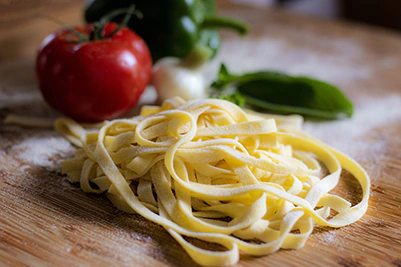| Additive Summary | Riboflavin-5-Sodium Phosphate (E106) |
|---|---|
| Essence | Riboflavin-5-Sodium Phosphate or E106 is the synthetic version of Riboflavin (E101). It’s used for the creation of yellow color. It has a slightly bitter taste and no smell. |
| Names | Riboflavin-5-Sodium Phosphate, E106, E101(ii), Flavin mononucleotide sodium salt, vitamin B2, Vitamin B2 phosphate sodium salt, Riboflavin-5-Phosphate sodium salt, and others. |
| Sourcing | It is sourced from Riboflavin and Phosphorous Oxychloride or Chlorophosphoric Acid. |
| Manufacturing | The additive is manufactured through phosphorylation of the sourcing ingredients. |
| Application | Coloring (yellow to orange, not very water-soluble). |
| Acceptable Daily Intake | None set. Our bodies are very capable of excreting any excess of the additive whenever there’s too much of it. Exceeding 400 milligrams daily may prove detrimental. |
| Side Effects | None. In doses as high as 400 milligrams daily, it won’t cause any real or significant side effects (abdominal pain or diarrhea are possible). As an additive, it’s never used in amounts so high. |
| Benefits | In its essence, Riboflavin-5-Sodium Phosphate is a form of vitamin B2 despite the fact that it also gets used as a coloring additive. As a Vitamin B2, it can improve energy levels, aid in breaking down carbohydrates, fats, and proteins, support brain function, promote cellular functions, foster red blood cell production, help skin health, boost healthy digestive tract lining, and help in other ways. |
| Studies | 4,000 studies on Pubmed. 25+ studies on safety. |
| Allergens | None. |
| Diet Restrictions | None. |
| Assessment (As An Additive) |
Only Beneficial. | Category 0 Additive. |
| Products | Riboflavin-5-Sodium Phosphate is commonly used as the active ingredient in supplements like the Dr. Mercola Multivitamin, Thorne Research Advanced Nutrients, and others. It’s sometimes used as an additive in supplements, too. It’s naturally found in almonds, walnuts, yeast, buttermilk, yoghurt, mushrooms, liver, green vegetables, peas, soy, milk, lean cheese, liver, salmon, mackerel, beans, clams, trout, meat, and others. It is used in processed foods like noodles, breakfast cereals, cheese, dried fruit, salads, flavored drinks, chewing gum, canned fruit, sweets, food decorations, fillings, macaroons, biscuits, cakes, pastries, mustard, sauces, soups, seasonings, wine products, and others. |



